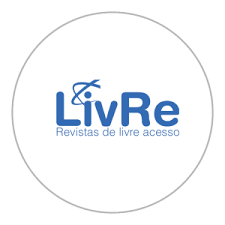Sistema web orientado a la movilidad de personas con discapacidad
DOI:
https://doi.org/10.64041/riidg.v4i3.49Palabras clave:
interacción humano-computador, domótica, paraplejia, sistemas embebidos, accesibilidad tecnológica.Resumen
La presente investigación aborda el diseño e implementación de un sistema domótico de bajo costo orientado a mejorar la calidad de vida de personas con paraplejia, utilizando plataformas de hardware y software libre como Arduino y Raspberry Pi. El sistema desarrollado permite la automatización y el control remoto de dispositivos eléctricos mediante una aplicación móvil, incorporando funcionalidades como iluminación, ventilación, detección de fugas de gas, control de temperatura y envío de alertas al usuario. El prototipo fue validado a través de pruebas alfa y beta, demostrando ser funcional, accesible y adaptable a las necesidades de los usuarios finales. Los resultados evidencian que la interacción humano-computador aplicada a sistemas embebidos constituye una solución eficaz para promover la independencia, seguridad y autonomía de personas con movilidad reducida, particularmente en contextos de limitaciones económicas como el ecuatoriano.
Citas
Alheraish, A. (2004). Design and implementation of home automation system. IEEE Transactions on Consumer Electronics, 50(4), 1087–1092. https://doi.org/10.1109/TCE.2004.1362503
Bajer, L., & Krejcar, O. (2015). Design and realization of low cost control for greenhouse environment with remote control. IFAC-PapersOnLine, 28(4), 368–373. https://doi.org/10.1016/j.ifacol.2015.07.062
Baker, J. S., Grace, F., Kilgore, L., Smith, D. J., Norris, S. R., Gardner, A. W., Ringseis, R., Eder, K., Shephard, R. J., Kokkinos, P., Lee, R. E., Ho, A., Markovic, G., MacIntosh, B. R., Nollet, F., Barakat, R., Silva, M. N., Teixeira, P. J., Hassmén, P., … Haverkamp, H. C. (2012). Paraplegia. In Encyclopedia of Exercise Medicine in Health and Disease. Springer Berlin Heidelberg. https://doi.org/10.1007/978-3-540-29807-6_2834
Baladrón, C., Aguiar, J. M., Gobernado, J., Carro, B., & Sánchez, A. (2010). User-driven context aware creation and execution of home care applications. Annales Des Telecommunications/Annals of Telecommunications, 65(9–10), 545–556. https://doi.org/10.1007/s12243-010-0164-4
Bonaccorsi, M., Fiorini, L., Cavallo, F., Saffiotti, A., & Dario, P. (2016). A Cloud Robotics Solution to Improve Social Assistive Robots for Active and Healthy Aging. International Journal of Social Robotics, 8(3), 393–408. https://doi.org/10.1007/s12369-016-0351-1
Caytiles, R. D., & Park, B. (2012). Mobile IP-based architecture for smart homes. International Journal of Smart Home, 6(1), 29–36.
Chen, K.-Y., Harniss, M., Patel, S., & Johnson, K. (2014). Implementing technology-based embedded assessment in the home and community life of individuals aging with disabilities: a participatory research and development study. Disability and Rehabilitation: Assistive Technology, 9(2), 112–120. https://doi.org/10.3109/17483107.2013.805824
Consejo Nacional para la Igualdad de Discapacidades / Dirección de Gestión Técnica, & Fuente: Ministerio de Salud Pública de Ecuador. (2017). Estadísticas | CONADIS. Ministerio de Salud Pública de Ecuador. http://www.consejodiscapacidades.gob.ec/estadistica/index.html
Deepali Javale ; Mohd. Mohsin ; Shreerang Nandanwar ; Mayur Shingate. (2013). Home Automation and Security System Using Android ADK. International Journal of Electronics Communication and Computer Technology, 3(2), 382–385. http://www.ijecct.org/v3n2/(382-385)0302M22.pdf
Gomes Sakamoto, S., de Miranda, L. C., & Hornung, H. (2014). Home Control via Mobile Devices: State of the Art and HCI Challenges under the Perspective of Diversity. 501–512. https://doi.org/10.1007/978-3-319-07446-7_49
Guerreiro, J., Lourenço, A., Silva, H., & Fred, A. (2014). Performance Comparison of Low-cost Hardware Platforms Targeting Physiological Computing Applications. Procedia Technology, 17, 399–406. https://doi.org/10.1016/j.protcy.2014.10.204
Kevin, K. M., Kogeda, O. P., & Lall, M. (2016). Performance Optimization of Intelligent Home Networks. 209–234. https://doi.org/10.1007/978-3-319-33124-9_9
Klemenjak, C., Egarter, D., & Elmenreich, W. (2016). YoMo: the Arduino-based smart metering board. Computer Science - Research and Development, 31(1–2), 97–103. https://doi.org/10.1007/s00450-014-0290-8
Lancheros-Cuesta, D. J., Marin, M. P., & Vela Saenz, Y. (2015). Intelligent system (HCI) for people with motor misabilities. In Information Systems and Technologies (CISTI) (pp. 1–6). https://doi.org/10.1109/CISTI.2015.7170432
Llanos, D. R. (2014). Teaching “ Embedded Operating Systems ” using Raspberry Pi and Virtual Machines. Universidad de Granada, 4, 25–32.
Maier, K., Helwig, A., & Müller, G. (2016). Room-temperature accumulation gas sensors with periodic reset Room-temperature accumulation gas sensors with periodic reset. Sensors & Actuators: B. Chemical. https://doi.org/http://dx.doi.org/10.1016/j.snb.2016.12.119
Marwedel, P. (2006). Implementing Embedded Systems: Hardware/Software Codesign. In Embedded System Design (pp. 151–197). Springer US. https://doi.org/10.1007/0-387-30087-2_5
McGrath, M. J., & Scanaill, C. N. (2013). Sensor Network Topologies and Design Considerations. In Sensor Technologies (pp. 79–95). Apress. https://doi.org/10.1007/978-1-4302-6014-1_4
Mulfari, D., Celesti, A., Fazio, M., Villari, M., & Puliafito, A. (2014). Using embedded systems to spread assistive technology on multiple devices in smart environments. Proceedings - 2014 IEEE International Conference on Bioinformatics and Biomedicine, IEEE BIBM 2014, 5–11. https://doi.org/10.1109/BIBM.2014.6999234
Noguera-arnaldos, J. Á., & Rodriguez-garcía, M. Á. (2015). On the Move to Meaningful Internet Systems: OTM 2015 Workshops (I. Ciuciu, H. Panetto, C. Debruyne, A. Aubry, P. Bollen, R. Valencia-García, A. Mishra, A. Fensel, & F. Ferri (eds.); Vol. 9416). Springer International Publishing. https://doi.org/10.1007/978-3-319-26138-6
Piyare, R. (2013). Internet of Things : Ubiquitous Home Control and Monitoring System using Android based Smart Phone. International Journal of Internet of Things, 2(1), 5–11. https://doi.org/10.5923/j.ijit.20130201.02
Rathnayaka, A. J. D., Potdar, V. M., & Kuruppu, S. J. (2011). Evaluation of wireless home automation technologies. IEEE International Conference on Digital Ecosystems and Technologies, 5(June), 76–81. https://doi.org/10.1109/DEST.2011.5936601
Reguera, P., Garc??a, D., Dom??nguez, M., Prada, M. A., & Alonso, S. (2015). A Low-cost Open Source Hardware in Control Education. Case Study: Arduino-Feedback Ms-150. IFAC-PapersOnLine, 48(29), 117–122. https://doi.org/10.1016/j.ifacol.2015.11.223
Santoso, F. K., & Vun, N. C. H. (2015). Securing IoT for smart home system. 2015 International Symposium on Consumer Electronics (ISCE), 2015-Augus, 1–2. https://doi.org/10.1109/ISCE.2015.7177843
SERLI. (2017). SERLI - Sociedad Ecuatoriana Pro Rehabilitacion de Lisiados. http://www.serli.org.ec/
Soriano, A., Marín, L., Vallés, M., Valera, A., & Albertos, P. (2014). Low Cost Platform for Automatic Control Education Based on Open Hardware. {IFAC} Proceedings Volumes, 47(3), 9044–9050. https://doi.org/http://dx.doi.org/10.3182/20140824-6-ZA-1003.01909
Vujovi??, V., & Maksimovi??, M. (2015). Raspberry Pi as a Sensor Web node for home automation. Computers and Electrical Engineering, 44, 153–171. https://doi.org/10.1016/j.compeleceng.2015.01.019
Zhang, X. (2012). Intelligent Assistive and Robotics Development in China. Mechanical Engineering and Technology, 97–106. https://doi.org/10.1007/978-3-642-27329-2_14
Descargas
Publicado
Cómo citar
Número
Sección
Licencia
Derechos de autor 2025 Thayri Carolina Oña Reyes

Esta obra está bajo una licencia internacional Creative Commons Atribución-NoComercial-SinDerivadas 4.0.
Los contenidos de esta revista se publican bajo la licencia Creative Commons Atribución–NoComercial–SinDerivadas 4.0 Internacional (CC BY-NC-ND 4.0).
Usted es libre de compartir el material en cualquier medio o formato, siempre que:
-
Reconozca la autoría original.
-
No utilice la obra con fines comerciales.
-
No realice obras derivadas, adaptaciones o modificaciones.
Enlace oficial: https://creativecommons.org/licenses/by-nc-nd/4.0/








